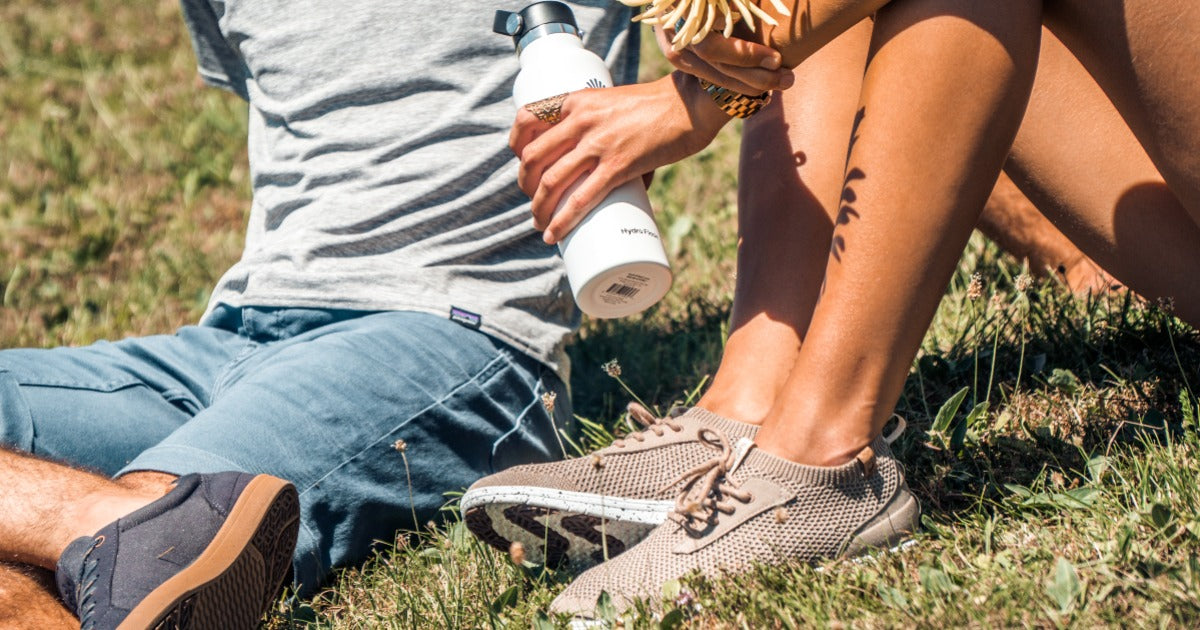Connaissez-vous l’upcycling et le downcycling ?
Il faut d’abord revoir la définition du recycling (ou recyclage en français) afin de bien comprendre ce que sont l’upcycling (surcyclage) et le downcycling (décyclage).

On pourrait définir le recycling par « faire du neuf avec du vieux ». Cette définition n’est pas très scientifique mais elle est juste. L'idée est donc de transformer un(e) produit/matière en un autre objet/substance différent de son prédécesseur. On obtient alors un nouvel objet sans réutiliser de matière première, ou très peu. Le second procédé est aussi de pouvoir reconstruire le même produit, à l'identique, à partir de l'ancien. C'est pas fou ça ?
Il existe deux types de recyclage différents de l'upcycling et du downcycling. On distingue le recyclage à boucle fermée et le recyclage à boucle ouverte.
Afin de mieux comprendre, prenons l’exemple d’une bouteille en plastique :

- En boucle fermée, la bouteille en plastique sera recyclée en une nouvelle bouteille plastique, identique à celle de base. C’est donc une boucle infinie puisque le plastique n’est pas « dégradé » dans la nature mais réutilisé.
- En boucle ouverte, la bouteille en plastique est transformée. On retrouve cet exemple dans certains textiles. Ces nouvelles matières n’étant par la suite pas recyclable, il finira sûrement sa vie dans une décharge. La boucle n’est donc pas infinie.
Vous vous demandez donc, que viennent faire ici le downcycling et le upcycling ?
Le décyclage et le surcyclage sont en réalité des tendances du recyclage.
Le downcycling consiste à recycler encore et encore le matériau, lui faisant perdre de sa qualité. Le matériau ne retrouvera que très rarement son utilité de base. Par exemple, le papier d’un livre sera transformé en papier recyclé. Celui-ci est évidemment plus écolo, mais de qualité moindre. Attention cependant, un matériau de qualité moindre pour une certaine application, peut être de bonne qualité pour une autre. Par exemple, prenons l’acier provenant de voitures. Une fois recyclé, cet acier ne peut plus être utilisé à cause des normes de sécurité de l’industrie automobile. Par contre il peut être réutilisé dans le bâtiment. On lui trouve donc une nouvelle utilité.
Pour le surcycling, ce procédé est apparu dans les années 90 dans les pays en voie de développement. L'upcycling est le fait d’utiliser des matériaux en fin de vie pour en faire un produit avec une valeur ajoutée. C’est-à-dire que l’on réutilise on produit qui ne sert plus, ou qui ne peut plus servir, afin d’en faire un produit utile.
Cette façon de recycler a un impact positif énorme sur l’environnement puisqu’elle permet de beaucoup moins gaspiller et qu’elle réduit le nombre de déchets. On ne transforme pas à proprement parler le matériau, on le découpe, le tourne, le pli, afin d’obtenir un nouveau produit. L’upcycling ressemble au « Do It Yourself » qui consiste à créer un objet soi-même alors qu’on pourrait le trouver en magasin.

Et SAOLA SHOES dans tout ça ?
Les chaussures SAOLA ne sont ni de l’upcycling ni du downcycling.
On ne peut pas parler d’upcycling lorsque l’on parle de Saola puisque les matériaux utilisés dans les chaussures sont déjà des matériaux recyclés. Reprenons l’exemple des bouteilles plastiques. Celles-ci sont d’abord récoltées, que ce soit dans les poubelles ou dans la nature, puis sont transformées en copeaux de plus en plus petits avant d’être transformées, sans substances chimiques supplémentaires, en granulés. Ces derniers sont ensuite fondus et étirés comme du tissu. Nous sommes donc dans une boucle ouverte où, une fois la paire de SAOLA obtenue, il devient compliqué de la recycler comme tout type de chaussures.

On ne peut non plus dire que c’est du downcycling car la qualité des matériaux utilisés dans la chaussure ne sont pas d’une qualité moindre par rapport à leur précédente fonction. On utilise différemment la matière originale sans altéré la qualité, tout simplement.
Mais alors, quel type de recyclage fait SAOLA SHOES ?
Nous utilisons le recyclage à boucle ouverte ! En effet, les matériaux sont récoltés de la nature puis transformés en sneakers SAOLA. En toute transparence, nous redonnons une deuxième vie à ces matières fossiles mais il est encore compliqué de rendre cette boucle infinie. Néanmoins, nous sommes sur différentes pistes qui permettrait d'atteindre l'utopie de passer sur un système de boucle fermée.
Vous voyez l'idée ? Oui, effectivement, nous serons bientôt capables de recycler vos chaussures SAOLA en les réincorporant dans les collections suivantes. Bien que cela soit compliqué à mettre en place d'un point de vu matériaux et logistiques, nous ne lâchons rien et sommes sur la bonne voie.



